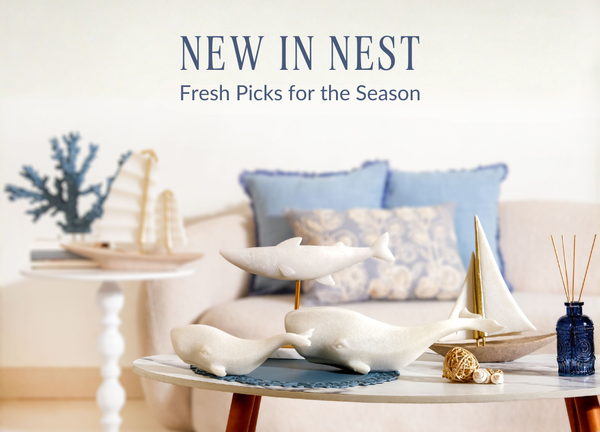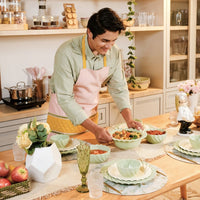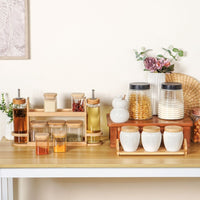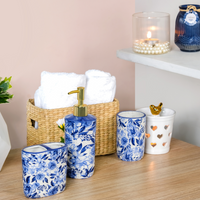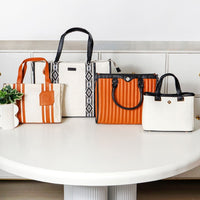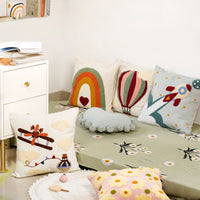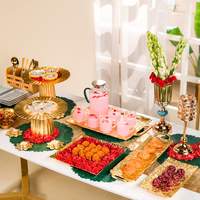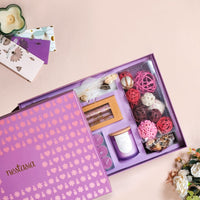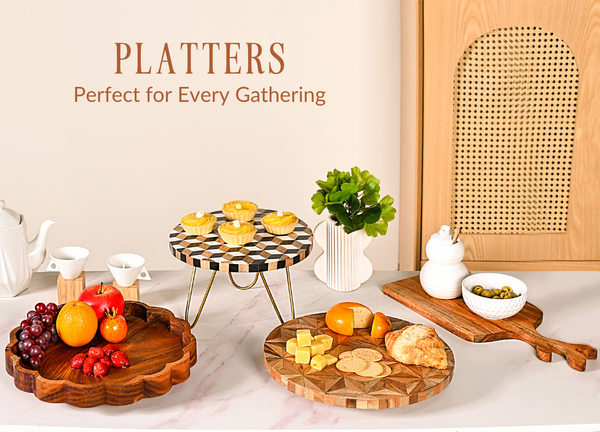Say Cheese!

Cheese has a way of capturing the hearts of everyone! Think about the classic Tom and Jerry cartoons, where a single slice of cheese was enough to send Jerry into a blissful daze and spark another round of mischief with Tom.
That iconic image isn’t far from reality; cheese holds a universal charm that transcends age and culture. Whether it’s melted into a grilled cheese, sliced onto a crusty baguette, or artfully arranged on a cheeseboard, cheese has become one of the world’s most beloved and versatile foods.
For many like me, it is more than just a snack; it’s a symbol of comfort, tradition, and culinary creativity, like cheeseboards!
To understand what cheeseboards are, let us take a journey down memory lane.
The Origin of Cheese
Cheese is one of the oldest known foods, with origins that stretch far back beyond recorded history. While no one can say for certain where cheesemaking first began, whether it was in Europe, Central Asia, or the Middle East, it's clear that this beloved food has ancient roots.
Some of the earliest estimates trace its beginnings to around 8000 BCE, around the time when humans first began domesticating sheep. From those early, humble experiments in curdling milk, a rich and varied tradition of cheesemaking was born, one that continues to evolve to this day.
The earliest cheeses were likely simple, sour, and salty, resembling something like rustic cottage cheese or crumbly feta, the tangy staple of Greek cuisine. In cooler European climates, however, cheesemakers didn’t need as much salt to preserve their creations as those in the warmer Middle East did.
This subtle shift had a big impact: with lower salt and acidity levels, cheese in Europe became an ideal environment for beneficial microbes and molds to thrive. Over time, this led to the development of aged cheeses with the deep, complex flavors we love today.
Cheeseboard: History and Importance
According to the Cambridge English Dictionary, a cheeseboard is basically “a board on which cheese is cut or served.” At its core, a cheeseboard is a curated spread of complementary ingredients, typically by a selection of different types of cheese. These boards often feature cured meats, crackers, bread, fresh or dried fruits, nuts, spreads like honey or jam, and sometimes even olives or pickled vegetables.

England: Tradition, Refinement, and Domestic Life
Cheeseboards, as we know them today, rose to prominence in 18th and 19th-century England. With the rise of formal dining, the "cheese course" became a refined tradition, often signaling hospitality and social standing. More than just a snack platter, cheeseboards are a communal, interactive experience, encouraging guests to mix, match, and share flavours that include the pleasure of carefully slicing and serving each variety with special cheese knives.
 While the French perfected “charcuterie” (similar to cheese boards, just with different types of meat), the British showcased regional favourites like Stilton, Cheddar, and Wensleydale cheese.
While the French perfected “charcuterie” (similar to cheese boards, just with different types of meat), the British showcased regional favourites like Stilton, Cheddar, and Wensleydale cheese.
The importance of cheese in English culture is beautifully reflected in literature and subtly reflects on domestic life and class. Charles Dickens mentions a humble cheeseboard meal in The Old Curiosity Shop, while Jerome K. Jerome humorously struggles with cheese on a picnic in Three Men in a Boat.
In addition to that, even under the dire situation of isolation, Ben Gunn, a half-crazed sailor, who has been living on the island, asks Jim Hawkins, “You mightn’t happen to have a piece of cheese about you now? No? Well. Many’s the long night I’ve dreamed of cheese” (if he had cheese) and of which Jim swears that “If ever I can get aboard again, you shall have cheese by the stone.”
This solely marks the cultural importance of cheese in England, not just as a food, but as a symbol of comfort, memory, and identity. Cheese, in these literary moments, transcends its role on the plate and becomes a connection to home, to routine, and to the quiet rituals of everyday English life.
France: The Art of Fromage and Cultural Elegance
In France, the cheeseboard, known as the plateau de fromages, is much more than a simple food presentation; it is a proud expression of French culinary artistry and cultural identity. With over 400 recognized varieties, many protected under the AOC (Appellation d'Origine Contrôlée) system, French cheeses are celebrated as symbols of terroir, the unique characteristics imparted by a region’s soil, climate, and traditions. From creamy Brie to pungent Roquefort, each cheese tells a story of place and heritage.
What sets the French cheeseboard apart is its structure and ritual. There is a thoughtful order to how cheeses are arranged. It’s typically from the mildest to the most robust in flavor, ensuring a balanced tasting experience. Presentation is considered an art in itself, reflecting the French emphasis on aesthetics, etiquette, and respect for food traditions.

Culturally, the cheeseboard is a cornerstone of social dining in France. Often served after the main course and before dessert, it encourages lingering at the table, sharing conversation, and savouring each bite. Paired with wine, fruit, or bread, it transforms a meal into a leisurely and communal experience. In every region and at every gathering, the French cheeseboard remains a cherished symbol of connection, hospitality, and national pride.
Italy: Rustic Simplicity and Regional Variety
In Italy, the cheeseboard reflects the country’s rustic, seasonal, and regionally rich food culture. Often served as part of antipasti (traditional first course of a formal Italian meal), it highlights beloved local cheeses like Parmigiano Reggiano from the north or Pecorino from the south, paired with cured meats, olives, and fresh bread.
Unlike the formal French approach, Italian cheeseboards are casual and rooted in familial warmth. They are typically shared during social gatherings, emphasizing abundance, simplicity, and heartfelt hospitality. Rather than a precise structure, the Italian cheeseboard celebrates the joy of sharing, reflecting the nation’s love for food, tradition, and the connections made around the table.
Spain: Bold Flavors and Mediterranean Pairings
In Spain, cheeseboards are vibrant, flavourful expressions of the country’s rich culinary heritage. They often feature bold, aged cheeses like Manchego, accompanied by traditional pairings such as quince paste (membrillo), Marcona almonds, figs, and slices of jamon (a type of dry-cured ham produced in Spain. It is one of the most globally recognized food items of Spanish cuisine: Wiki) These boards capture the essence of Spanish cuisine, i.e., rustic yet refined, rooted in tradition yet open to creativity.
Cheeseboards in Spain are typically enjoyed tapas-style, designed for sharing among friends and family. They reflect the Spanish emphasis on social dining, where meals are long, relaxed, and filled with conversation. Rather than a formal course, cheese is woven naturally into the dining experience.
The accompaniments on a Spanish cheeseboard speak to the country’s bold flavours of Mediterranean roots, balanced by sweet and savory elements, often enjoyed with a glass of Rioja or Cava. Whether served at a casual gathering or a festive celebration, the Spanish cheeseboard is a flavorful symbol of hospitality, connection, and regional pride.
The Evolution: From Rustic Tables to Modern Grazing Culture
In recent years, the traditional cheeseboard has undergone a stunning transformation, evolving into what is now widely recognized as the “grazing board.”
This modern culinary trend, deeply influenced by the aesthetics of social media platforms like Pinterest and Instagram, has taken Europe and much of the world by storm! While rooted in the cultural customs of cheese and charcuterie, the grazing board is the classic representation of a traditional cheeseboard and charcuterie concept into a visually captivating and richly layered experience that blends tradition, creativity, and abundance.
Modern grazing boards are no longer limited to cheese and crackers. They are expansive, colorful spreads designed to engage all the senses. Visually, these boards feature contrasting textures, vibrant hues, and artistic arrangements. Think creamy Brie beside crunchy almonds, ruby-red pomegranate seeds nestled next to rich blue cheese, and crusty artisan bread paired with velvety fig jam. Cheeses from across Europe—like French Camembert, English Stilton, Spanish Manchego, and Italian Gorgonzola—are often showcased side by side, reflecting both regional pride and cross-cultural influence.
What sets grazing boards apart is their use of decorative and edible accents. Fresh herbs, edible flowers, honeycomb, sprigs of rosemary, and even small decorative bowls filled with tapenade or hummus create visual interest while adding aromatic and flavor dimensions. These details, often influenced by lifestyle bloggers and food stylists, transform cheeseboards from simple fare into centerpieces for celebration.
International influences are another hallmark of the grazing culture. Alongside traditional cheeses, you might find Middle Eastern dates, Moroccan olives, Turkish apricots, Japanese rice crackers, or South American fruit pastes, making these boards not only a culinary adventure but also a statement of global connectivity and modern food culture.
Ultimately, modern grazing boards serve as a beautiful bridge between old-world traditions and contemporary tastes. They offer not just food, but a sensory and social experience, bringing people together around a board filled with beauty, flavor, and cultural richness.
Want to try your hand at cheeseboards? Check out our Sleek Wooden Snacks Platter Set With Dip Bowls And Cheese Knives to get yourself started.
The Social Media Effect
With the rise of Pinterest, Instagram, and TikTok, cheeseboards have entered a whole new era. No longer just about flavor, they’re now judged by aesthetic appeal. Creators use vibrant fruits, edible flowers, and artful placement to craft boards that double as edible décor.
Search for “cheeseboard inspiration” online, and you’ll find boards themed for holidays, birthdays, bridal showers, and baby announcements. Some are color-coded (think pink for Valentine’s Day or orange for Halloween), while others feature international themes, like Mediterranean or Asian-fusion boards.
The trend has sparked a wave of small businesses offering pre-made grazing boxes and on-site grazing table setups. These days, a cheeseboard isn’t just food—it’s an experience, a statement piece, and a conversation starter.
So, whether you're putting one together for a quiet night with family or making an elaborate spread for your next event, know that you're participating in a rich (and delicious) history. All it takes is a board, a few ingredients, and a little inspiration to bring centuries of tradition right into your home.
